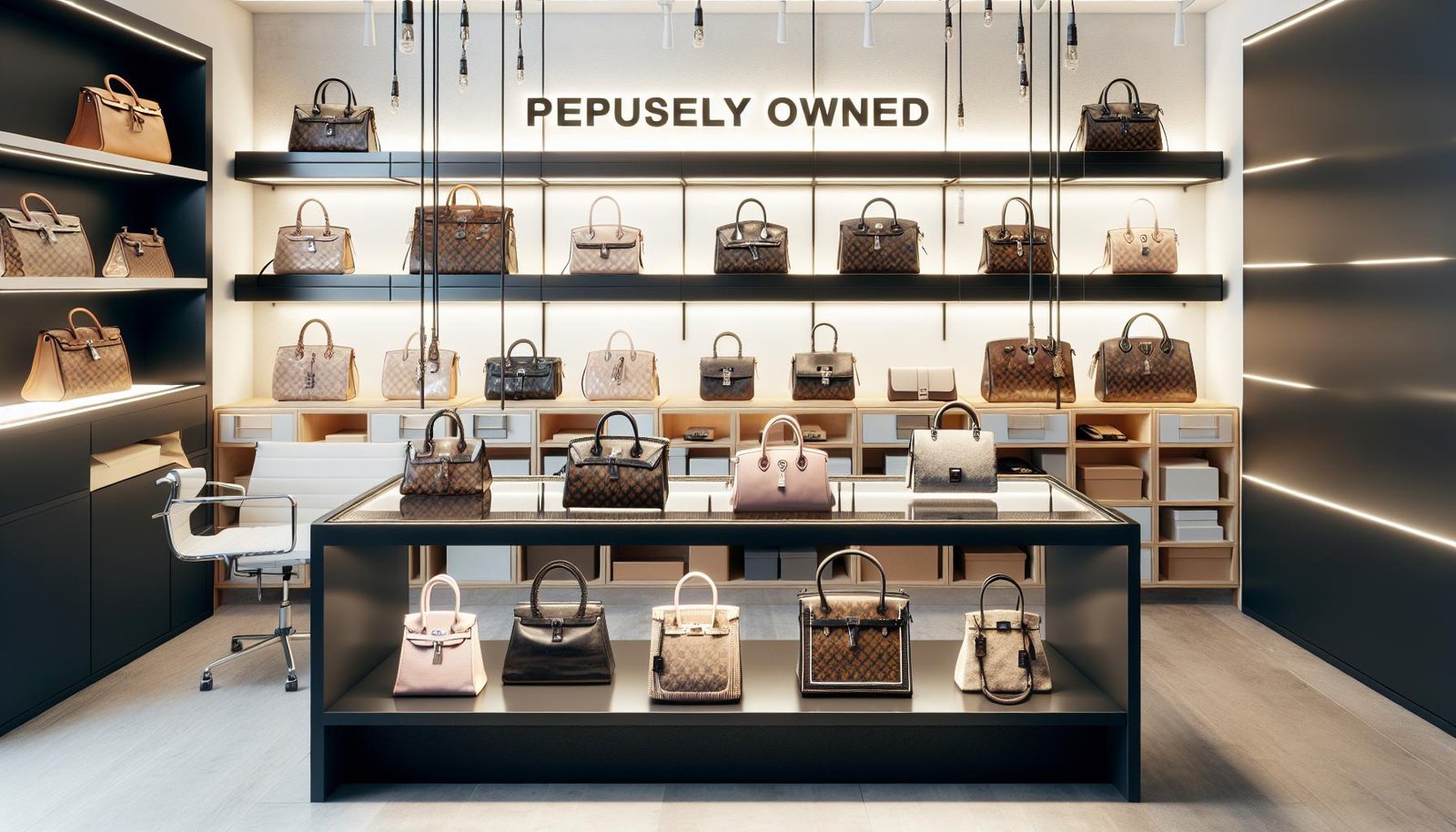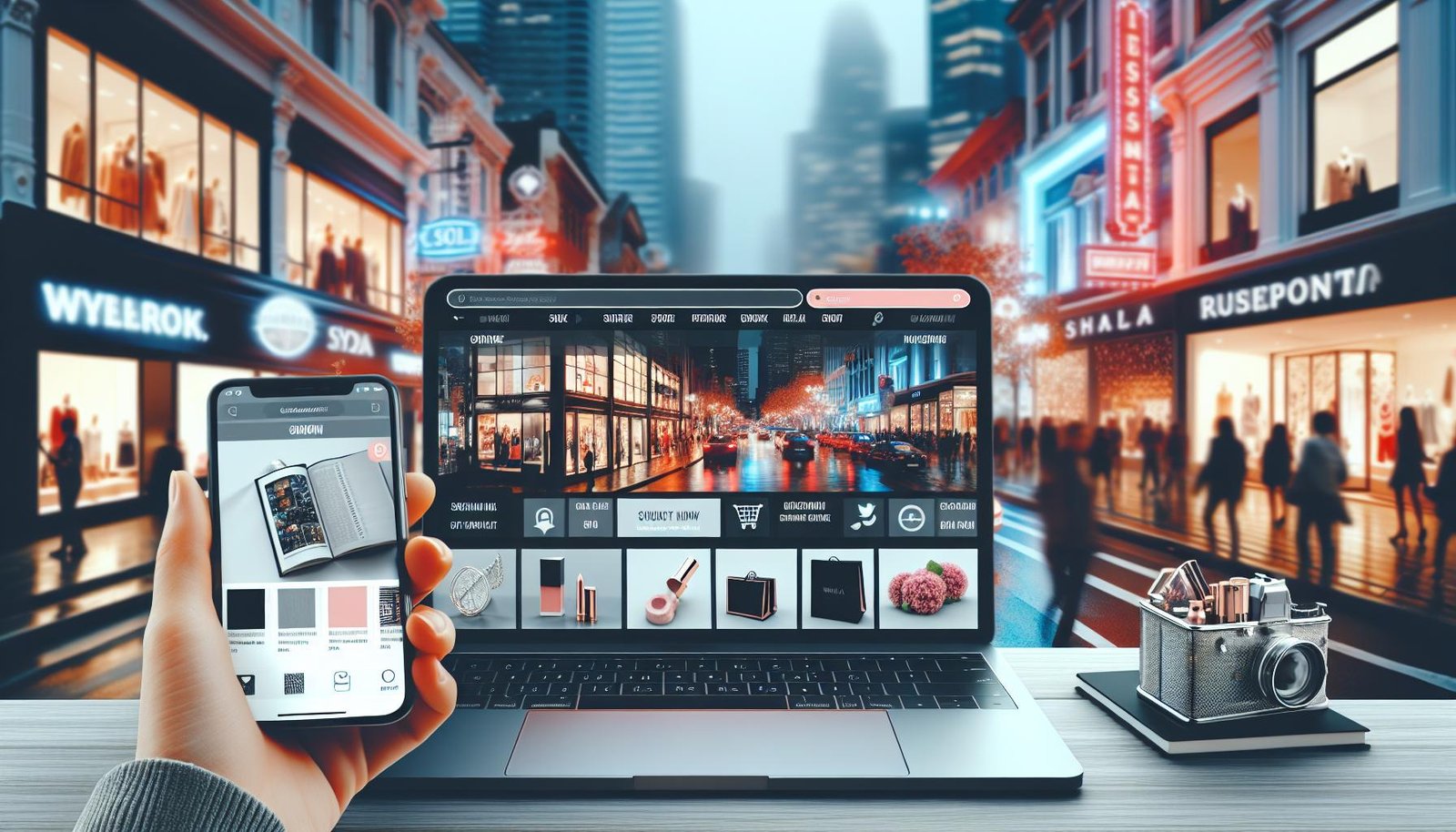Starting a luxury vintage clothing business has always been a dream of mine. The allure of timeless fashion, the stories behind each piece, and the sustainability aspect of giving clothes a second life—it’s a passion that combines history, fashion, and eco-consciousness. Venturing into this niche market isn’t just about selling clothes; it’s about curating a collection that resonates with the soul of past eras and meets the luxury standards of today’s discerning clientele.
Navigating this journey, I’ve learned that starting a luxury vintage clothing business is both challenging and rewarding. It requires a keen eye for quality, an understanding of the market, and a flair for marketing. But for those of us who live and breathe vintage, it’s a deeply fulfilling path. Join me as I share insights and tips on how to successfully launch your own luxury vintage clothing empire. Let’s bring the elegance of the past into the present together.
Understanding the Luxury Vintage Clothing Market
Diving into the luxury vintage clothing market, I quickly realized it’s entirely different from typical retail. This market thrives on the exclusivity and history of its pieces, attracting customers who are not just looking to purchase clothing but to invest in timeless stories. Navigating through this unique space requires a grasp of its foundations, trends, and customer preferences.
Identifying market trends plays a crucial role. Fashion is cyclical, and what’s old becomes new again. I keep an eye on runways, celebrity styles, and fashion week highlights to predict which vintage periods will come back into vogue. For instance, 90s fashion has seen a resurgence, making luxury vintage pieces from that era especially sought after.
Understanding the customer base is equally important. Luxury vintage buyers are discerning; they value quality, uniqueness, and the sustainability of their purchases. They’re willing to pay a premium for items that not only look good but have a story and a historic value. Through market research, I’ve learned that these customers often frequent specific online platforms and physical boutiques known for their curated collections of luxury vintage pieces.
Sourcing the right merchandise is another aspect I’ve had to master. Luxury vintage clothing requires authenticity, excellent condition, and sometimes rarity. I’ve built relationships with vintage collectors, attended estate sales, and connected with families looking to offload heirloom pieces. Each item I source undergoes thorough verification to ensure authenticity and condition, as these factors greatly influence its value in the market.
Pricing strategy is different in the luxury vintage market. It’s not just about covering costs and adding a profit margin. Each item’s price reflects its rarity, condition, designer, and historical period. I’ve learned to appraise items based on these criteria, often consulting with fashion historians and using auction results as benchmarks.
Marketing luxury vintage pieces also requires a unique approach. Social media platforms like Instagram have been instrumental in reaching potential customers, utilizing high-quality imagery and storytelling to showcase the history and allure of each piece. Collaborating with fashion influencers who share an affinity for vintage styles has helped elevate my brand’s visibility and connect with my target audience on a deeper level.
Crafting Your Business Plan

Transitioning from understanding the luxury vintage clothing market to setting up my own business required careful planning and strategy. The creation of a comprehensive business plan was my next essential step. I’m excited to share the process of crafting a business plan that helped me navigate the complexities of this venture.
Identifying the Business Model
The first aspect I tackled was identifying the most suitable business model for my luxury vintage clothing store. I weighed options between a purely online platform and a physical boutique or a blend of both. I considered factors such as inventory accessibility, customer interaction opportunities, and overhead costs. Ultimately, a hybrid model appealed to me the most, offering online visibility with the personal touch of a physical experience for local customers.
Market Analysis
Understanding the market dynamics was crucial. I conducted a thorough analysis, focusing on identifying my target audience, including their spending habits, fashion preferences, and the platforms they frequent. Additionally, I analyzed competitors, pinpointing their strengths and areas where my business could offer something unique. This step helped me position my brand effectively in the market.
Sourcing and Inventory Management
A significant section of my plan was dedicated to sourcing and inventory management. Securing a network of suppliers who could provide high-quality, authentic vintage pieces required research and negotiation. I also planned for inventory storage and maintenance to ensure that each item remained in pristine condition until sold.
Financial Projections
Creating realistic financial projections was challenging but essential. I outlined expected costs, including acquisition, restoration, storage, and marketing. Then, I projected sales based on market research and initial feedback from potential customers. This helped me set realistic pricing strategies that balanced affordability for customers with profitability for the business.
Marketing and Sales Strategy
Building a marketing and sales strategy that resonated with my target audience was key. I opted to leverage social media platforms, particularly Instagram, known for its visual appeal and large fashion-conscious user base. Collaborating with fashion influencers and leveraging storytelling around the history and exclusivity of each piece, I intended to create a unique brand experience.
Operational Plan
Lastly, detailing an operational plan clarified day-to-day business running. From customer service protocols to shipping logistics and handling returns, I mapped out every process to ensure smooth operations and high customer satisfaction.
Establishing Your Brand

After sketching out a detailed business plan, I’ve found that establishing your brand is the next pivotal step in launching a successful luxury vintage clothing business. Here, I’ll break down the crucial components of brand establishment, focusing on identity, online presence, and customer experience.
Crafting a Unique Brand Identity
First off, determining your brand’s identity is foundational. This involves selecting a brand name that resonates with the essence of luxury vintage, designing a logo that stands out, and defining the core values and mission statement of your business. For my brand, I chose a name that whispers elegance and nods to the past, ensuring it would stick in the minds of my target audience. Crafting a logo, I aimed for something simple yet memorable, a visual cue that instantly brings my brand to mind.
Building a Strong Online Presence
Given the digital era we live in, building a strong online presence is non-negotiable. This starts with creating a professionally designed website that reflects the luxury aspect of the business. The website serves not just as a sales platform but also as a portfolio for my collection. Social media platforms are equally important; they’re channels to share stories behind selected pieces, engage with followers, and build a community around the brand. I make regular updates on Instagram, Facebook, and Pinterest, showcasing new arrivals and sharing style inspirations from the past that align with my collection.
Enhancing Customer Experience
The luxury market thrives on exceptional customer service. For my business, I found that offering personalized shopping experiences, whether online or in-person, significantly elevates customer satisfaction. This includes providing detailed product descriptions, history, and styling tips for each piece, along with responsive customer service to answer any queries. Packaging is another aspect I focus on; each item is wrapped beautifully, making every purchase feel like a special gift. Lastly, I’ve implemented a hassle-free return policy to build trust and ensure a positive shopping experience.
By concentrating on these key areas, I’ve been able to create a distinct brand identity that speaks to lovers of luxury vintage clothing. I continue to refine my strategies, always aiming to connect more deeply with my customers and stand out in the competitive luxury vintage market.
Operations and Logistics
After establishing a solid foundation for my luxury vintage clothing business, I shifted my focus to the backbone of retail: operations and logistics. This part of the business is crucial for ensuring that my luxury vintage pieces reach customers in the most efficient and satisfactory manner.
Sourcing and Authenticating Vintage Pieces
Sourcing vintage pieces is both an art and a science. I regularly visit estate sales, auctions, and connect with private sellers to find unique items. Authenticating each piece is essential to maintain the integrity of the business. I collaborate with experts in vintage fashion to verify the authenticity and condition of items before acquisition.
Inventory Management
Effective inventory management is vital to keep the business running smoothly. I use a cloud-based inventory system to track my stock levels, sales, and returns in real time. This helps me make informed decisions about which items to restock and when to introduce new collections.
Storage Solutions
Given the unique nature of luxury vintage clothing, proper storage is non-negotiable. I ensure that all items are stored in a climate-controlled environment to preserve their condition. Specialized garment bags and acid-free paper are staples in my storage to prevent any damage.
Shipping and Fulfillment
Shipping luxury vintage clothing requires a touch of elegance and security. I opt for reputable couriers that offer both reliability and meticulous handling of parcels. Each item is carefully packaged in branded materials for a memorable unboxing experience. For international orders, I make sure to provide customers with all necessary tracking information and support for a seamless delivery process.
Customer Service and Returns Policy
Exemplary customer service is at the heart of my operations. I maintain an open line of communication through multiple channels, including email, social media, and a dedicated phone line. My returns policy is transparent and customer-friendly, ensuring that any issues are resolved promptly to maintain trust and satisfaction.
Sustainability Practices
Sustainability is crucial for a luxury vintage clothing business. I’ve implemented practices such as using recyclable shipping materials and offering a garment repair service to extend the life of the vintage pieces. This approach not only resonates with eco-conscious customers but also reinforces the value of timeless fashion.
In navigating the operations and logistics of my luxury vintage clothing business, I’ve learned that attention to detail, efficient processes, and a commitment to excellent customer service are key. These elements, combined with a passion for vintage fashion, drive the success and growth of my business in the competitive market.
Marketing and Sales Strategies
Continuing my journey into the luxury vintage clothing market, focusing on strong marketing and sales strategies has been crucial. These strategies have played a pivotal role in shaping my business’s success and maintaining its competitive edge in a bustling marketplace.
Identifying the Target Audience
First off, I identified my target audience with precision. Luxury vintage enthusiasts are not just looking for clothing; they’re seeking pieces with history, uniqueness, and a touch of exclusivity. My targeting strategies center around demographics interested in fashion history, sustainability, and unique, high-quality garments. Platforms such as Instagram and Pinterest have been invaluable for reaching out to this audience, given their visual nature and popularity among fashion-forward communities.
Creating a Strong Online Presence
Creating a robust online presence was next on my list. I launched a visually appealing website that not only showcases my inventory but tells the story behind each piece. Blog posts on the history of certain styles, care tips for vintage clothing, and fashion inspiration ideas have helped in engaging my audience deeper. Additionally, I made sure my business is active on relevant social media platforms, engaging with my followers through regular posts, stories, and live sessions to create a community around my brand.
Leveraging Word-of-Mouth and Influencer Partnerships
Word-of-mouth has been a powerful tool. Satisfied customers often become brand ambassadors, sharing their finds and experiences with my shop in their networks. I’ve also partnered with fashion influencers who align with my brand’s aesthetics and values. These collaborations include curated photoshoots, unboxing videos, and special discounts for their followers, which have significantly boosted my visibility and credibility.
Implementing a Clientele Program
I introduced an exclusive clientele program to foster loyalty and repeat business among my customers. This program offers perks such as early access to new arrivals, special discounts, and invites to private events. It’s been a hit, particularly among serious collectors and fashion enthusiasts who value being part of an exclusive shopping community.
Analyzing and Adapting Sales Strategies
Finally, analyzing my sales strategies regularly has allowed me to adapt quickly to changes in the market and my audience’s preferences. Keeping a close eye on sales data, customer feedback, and fashion trends helps me fine-tune my inventory and marketing efforts, ensuring my business stays relevant and ahead of the curve.
Legal Considerations and Sustainability Practices

Transitioning from marketing and sales strategies in a luxury vintage clothing business to understanding the framework of legal considerations and sustainability practices, I learned that compliance and eco-friendliness are key to maintaining a positive business image and promoting long-term success. Here, I’ll share insights on navigating the legal landscape and implementing sustainability practices in the luxury vintage clothing industry.
Navigating Legal Considerations
Firstly, securing the necessary permits and licenses became my starting point. Depending on the location, this process varied, but generally included a business license, a resale permit for selling vintage clothing, and sometimes a special permit for operating an online store. Consulting with a legal professional helped me understand local regulations and avoid potential legal issues.
Trademarking the brand name and logo ensured my brand’s identity was protected. This step prevented future legal complications with similar businesses and safeguarded my brand’s image.
Implementing clear terms of service (ToS) and privacy policies on my website was crucial, especially since I was collecting customer data. These documents communicated to customers how their information would be used, promoting transparency and building trust.
Embracing Sustainability Practices
Incorporating sustainability into my business model was not just about environmental responsibility—it also appealed to my customer base, who valued eco-friendly shopping options. I focused on several key areas to enhance sustainability:
- Sourcing Responsibly: I partnered with suppliers and vendors who shared a commitment to sustainability, ensuring the vintage pieces I acquired were sourced ethically. Additionally, verifying the authenticity and history of each item ensured I was not contributing to counterfeit markets.
- Minimizing Waste: By focusing on quality over quantity, I aimed to reduce waste associated with fast fashion. Repairing and restoring vintage clothing before sale not only extended the life of unique garments but also minimized the environmental impact.
- Packaging and Shipping: Switching to eco-friendly packaging materials and offering carbon-neutral shipping options were steps I took to reduce my business’s carbon footprint. This approach aligned with my brand’s values and resonated well with customers.
- Educating Customers: Finally, educating my customers about the importance of sustainability in fashion became part of my brand’s mission. Sharing the backstory of each vintage piece and its environmental significance fostered a deeper connection between the product and the consumer.
Conclusion
Starting my luxury vintage clothing business was a journey filled with learning and passion. I’ve shared my experiences from understanding the market to implementing sustainability practices. It’s been rewarding to see my vision come to life, especially knowing I’m contributing to a more eco-friendly fashion industry. My advice? Stay true to your values and always keep your customers at the heart of your business. With dedication and hard work, you’ll not only build a brand but also make a positive impact. Here’s to the next chapter in our sustainable fashion journey!
Caterina has traveled the world first class, while earning money in side hustles like freelance writing, etsy stores and affiliate marketing. She loves helping other women achieve their financial dreams by teaching them how to plan and fund them.




